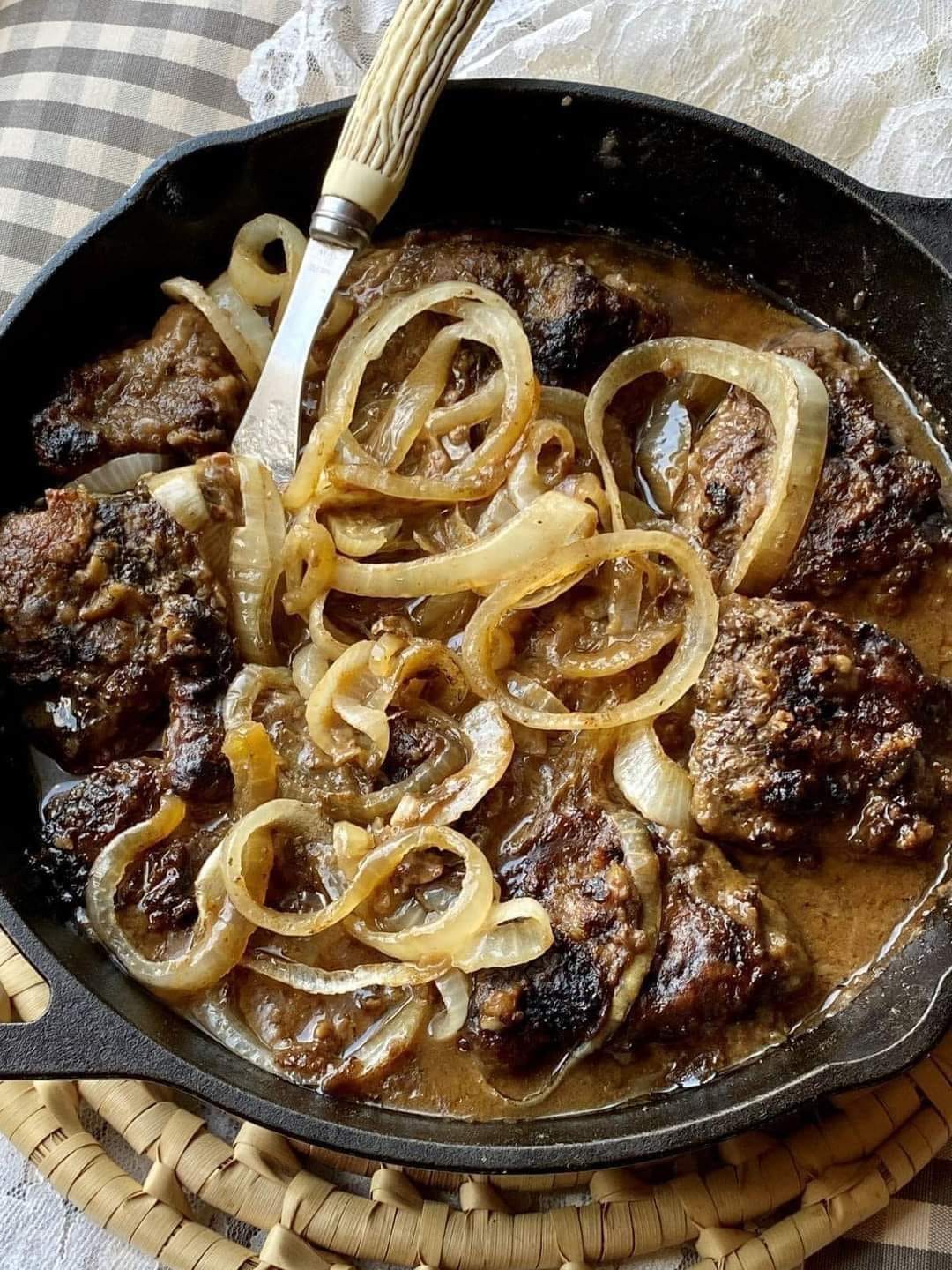ADVERTISEMENT
Does Anyone Actually Eat Liver and Onions? A Classic Dish with a Polarizing Reputation
Liver and onions: it’s a dish that tends to inspire strong opinions. For some, it’s a nostalgic comfort food that evokes memories of family dinners or hearty, home-cooked meals. For others, the thought of eating liver (especially in combination with onions) is enough to make them gag. So, does anyone actually eat liver and onions in the modern age? The answer might surprise you!
Liver and onions is one of those dishes that’s been passed down through generations, a staple in many cultures around the world. But despite its long history, it’s often met with skepticism, particularly in a time when many people are more accustomed to boneless, skinless chicken breasts or plant-based protein options. Let’s dive into the history, health benefits, and, yes, the reasons some people still swear by liver and onions as a delicious meal.
The Classic Dish: Liver and Onions
Liver and onions typically consists of sliced liver (often from beef, chicken, or pork) cooked with onions and seasoned with salt, pepper, and sometimes other herbs and spices. The onions are often caramelized, creating a sweet and savory flavor that balances out the stronger taste of the liver. The dish can be served on its own, but it’s commonly paired with mashed potatoes, rice, or bread to help mellow out the richness of the liver.
Why Liver?
Liver is one of the most nutrient-dense foods available. It’s an excellent source of:
- Iron: Liver is packed with heme iron, which is more easily absorbed by the body than the iron found in plant-based foods.
- Vitamin A: Liver is incredibly rich in vitamin A, which supports eye health, immune function, and skin health.
- B Vitamins: Liver is an excellent source of B vitamins, particularly B12, which plays a critical role in energy production and nerve health.
- Protein: Like most animal-based meats, liver is a great source of high-quality protein.
In fact, liver has earned its reputation as a “superfood” in some circles due to its abundance of vitamins and minerals. For those seeking a nutrient-packed meal, liver can be a valuable option—if you can get past its distinctive flavor and texture.
The Love-It or Hate-It Nature of Liver and Onions
So, why the polarizing opinions?
- Taste: The main reason liver is so divisive is its strong, distinctive flavor. Liver has an almost metallic taste that can be off-putting for some. This is particularly true when it comes to beef liver, which is the most intense in flavor. Chicken liver is often a more mild option for those just starting to explore the world of organ meats.
- Texture: The texture of liver can also be a deal-breaker for many. If it’s overcooked, it becomes tough and rubbery, while undercooked liver may be too soft and mushy. Getting the right balance is key to making liver palatable, and for some, that’s too much work.
- Cultural Perceptions: In many Western cultures, liver is seen as a “retro” or old-fashioned dish—something your grandmother might have made but that’s rarely seen on modern dinner tables. This, of course, feeds into its reputation as an “acquired taste” or even something to avoid.
- Health-Conscious Diets: In the age of low-fat, gluten-free, plant-based, and keto diets, liver doesn’t always fit into the current food trends. It’s high in cholesterol, which makes some people hesitant to indulge, despite its nutritional value. That said, most experts agree that eating liver in moderation is a healthy choice for many people, especially if you’re looking to boost your iron intake.
Why Some People Do Eat Liver and Onions
Despite its mixed reputation, there are still plenty of people who love liver and onions for its rich flavor and health benefits. Here’s why:
- Nutrient Density: For those who are health-conscious or looking to boost their intake of certain nutrients (like iron or vitamin A), liver is an excellent choice. It’s particularly valuable for people with iron deficiency or those who need to boost their red blood cell count, like pregnant women or people with anemia.
- Traditional Comfort Food: For some, liver and onions is a beloved family tradition. It evokes memories of home-cooked meals and provides a sense of nostalgia. The combination of caramelized onions and tender liver is, for many, a comforting, satisfying meal.
- Cost-Effective Protein: Liver is typically much cheaper than other cuts of meat, making it an affordable source of high-quality protein. It’s a great option for those on a tight budget who still want to enjoy nutrient-dense, protein-rich meals.
- Flavor Profile: If you enjoy bold, rich flavors, liver and onions can be a culinary delight. When cooked properly, the sweetness of the onions balances the rich flavor of the liver, making it an intriguing dish for those who appreciate adventurous eating.
- Versatility: Liver and onions can be prepared in a variety of ways. You can add spices like paprika, thyme, or sage to complement the flavors. Some people even add a splash of balsamic vinegar or red wine to the onions for extra depth of flavor. This versatility makes liver a dish that can be tailored to many different palates.
How to Cook Liver and Onions
If you’re curious about trying liver and onions, here’s a simple method to help you make the dish at home:
Ingredients:
- 1 lb beef or chicken liver, cleaned and trimmed
- 2 large onions, sliced
- 2 tablespoons butter or olive oil
- 1/4 cup flour (optional, for dredging)
- Salt and pepper to taste
- 1/2 cup broth (beef, chicken, or vegetable)
- 1 tablespoon balsamic vinegar (optional)
For Complete Cooking STEPS Please Head On Over To Next Page Or Open button (>) and don’t forget to SHARE with your Facebook friends
ADVERTISEMENT
ADVERTISEMENT
